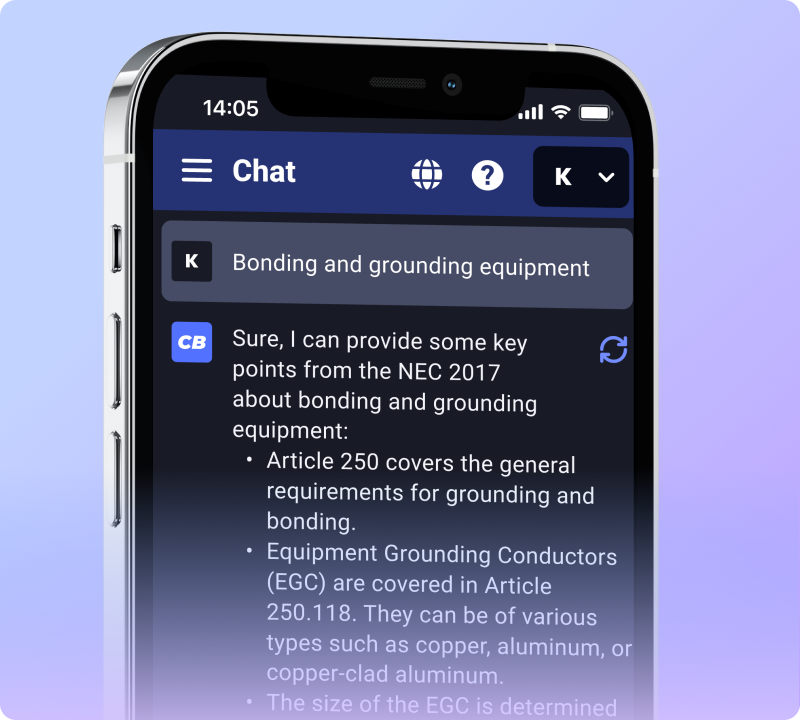Finding the best wire size for a 50 amp circuit can be tricky. You need a 6 AWG copper wire or a 4 AWG aluminum wire for safety and efficiency. This article will guide you through selecting the right wire gauge, considering factors like cost and whether to DIY or hire a professional.
Keep reading to learn everything you need to know about what wire size for 50 amp circuits works best.
Key Takeaways
- For a 50 amp circuit, you should use 6 AWG copper wire or 4 AWG aluminum wire. This ensures your electrical systems run safely and efficiently, especially for appliances like electric water heaters, ovens, and hot tubs.
- If your setup extends over long distances, like 300 feet or more, consider upgrading to a heavier gauge wire (4 or even 2 gauge) to reduce voltage drop. This is important for maintaining adequate power supply to high-demand appliances.
- When installing wires for a 50 amp circuit, take into account the National Electrical Code requirements. Using the correct gauge supports efficiency and compliance with safety standards.
- Installation costs vary based on material prices in your area and whether you opt for DIY installation or hiring a professional. Though doing it yourself can save money upfront, employing an expert ensures correct installation aligned with code regulations.
- Wire strength and material selection are crucial factors that influence the performance of a 50 amp circuit. Choosing between copper and aluminum wires depends on specific needs such as length of run and type of appliance powered.
Wire Size for 50 Amp Circuit
For a 50 amp circuit, use a 6 AWG copper wire or a 4 AWG aluminum wire. This setup can efficiently power electric water heaters, ovens, and hot tubs.
6 AWG copper wire or 4 AWG aluminum wire
A 50 amp circuit requires either a 6 AWG copper wire or a 4 AWG aluminum wire. This wire size effectively supports electric water heaters, electric ovens, and hot tubs. Using the proper wire gauge ensures safety and efficiency in your electrical systems.
For RV plugs, 6 gauge wire is the standard choice. However, if your setup is over 300 feet, consider upgrading to 4 or even 2 gauge wire. This adjustment helps manage voltage drop over long distances, ensuring your appliances receive adequate power.
Can power electric water heaters, ovens, hot tubs
A 50 amp circuit can power electric water heaters, electric ovens, and hot tubs. For these appliances, you need a 6 AWG copper wire or a 4 AWG aluminum wire. This wire size ensures safe and efficient operation.
If you use a 50 amp RV plug, the same 6 gauge wire is often necessary. For longer distances, like 300 feet, you might need to upgrade to 4 or even 2 gauge wire. This increase helps to manage voltage drop effectively, ensuring these high-demand appliances function properly.
Factors to Consider
When selecting the right wire size, consider several important factors. Evaluate the wire gauge that meets your circuit’s demands and ensure it can handle the required amperage efficiently.
Proper wire gauge for 50-amp circuit
A proper wire gauge for a 50-amp circuit is crucial for safety and performance. Use 6 AWG copper wire or 4 AWG aluminum wire to handle the load effectively. This gauge can power appliances like electric water heaters, ovens, and hot tubs.
For longer distances, such as 300 feet, consider upgrading to 4 or even 2 gauge wire to minimize voltage drop. If running wire in conduit, use 6 gauge stranded THHN. For installations without conduit, opt for 6 gauge UF wire.
Proper wire size for a 50-amp circuit ensures efficient operation and compliance with the National Electrical Code.
Wire strength and material
Wire strength and material play a crucial role in determining the best wire size for a 50 amp circuit. For copper wire, a gauge of 6 AWG is necessary. If you choose aluminum wire, opt for 4 AWG instead.
These wire sizes can handle high loads and power various electric appliances such as water heaters and hot tubs.
Consider the installation conditions. Use 6 gauge stranded THHN if running wire in conduit. For areas without conduit, 6 gauge UF is the right choice. The quality of wire affects the circuit’s performance.
Choose wires that meet the National Electrical Code for 50 amp applications and provide safe operation under expected loads. Next, examine the factors to consider for your installation.
Voltage drop and distance
The wire’s strength and material directly relate to voltage drop and distance. For a 50 amp circuit, wire size impacts performance. A longer distance increases voltage drop, which can affect devices.
For example, using 6 gauge wire for a 50 amp RV plug, distances of 300 feet may require upgrading to 4 or even 2 gauge wire.
At 100 feet, 150 feet, and 200 feet, consider the wire size carefully. The National Electrical Code outlines proper wire sizes for specific distances. Choose the wire that meets the ampacity requirements for a 50 amp circuit, ensuring safe and effective operation.
Cost of installation
Installing a 50 amp circuit comes with a few costs to consider. A 6 AWG copper wire typically ensures safe operation. For longer runs, using 4 AWG aluminum wire may be necessary. Prices for these wires vary based on your local market.
You also need to factor in the cost of labor if you hire a professional. DIY installation can save money, but it requires electrical knowledge and skill.
Proper installation is crucial. You must adhere to the National Electrical Code for a 50 amp circuit. Using the correct wire size avoids issues related to voltage drop. Decisions on using conduit or not will impact material costs as well.
Understanding these factors will help you make the best choices for your project. Next, let’s explore the wire size options for a 50 amp circuit.
DIY vs hiring a professional
DIY projects can save money but pose risks, especially with a 50 amp circuit. Electricians often recommend hiring professionals for safety. A 50 amp circuit requires a 6 AWG copper wire or a 4 AWG aluminum wire.
Correct installation is crucial for safety and efficiency.
Electricians know the National Electrical Code for a 50 amp circuit. They understand wire strength, voltage drop, and distance. For a 50 amp RV plug, a 6 gauge wire is typically necessary.
For longer runs, such as 300 feet, moving to a 4 or even 2 gauge wire might be essential. Relying on experts ensures you meet all electrical requirements and avoid issues.
FAQs
1. What’s the best wire size for a 50 amp circuit?
The best wire size for a 50 amp circuit depends on factors such as voltage drop, current rating, and distance. The National Electrical Code provides guidelines to determine the correct electrical conductor size.
2. How do I know if my breaker wire size is suitable for a 50 amp circuit?
To ensure your breaker wire size is appropriate for a 50 amp circuit, you should refer to the 50-amp wire size chart and consider factors like gauge and distance. An electrical inspection can confirm if it meets requirements.
3. Can I use any gauge of wire for my 50-amp RV plug?
No, not all gauges are suitable for a 50-amp RV plug. The proper gauge minimizes voltage drop and ensures safety according to the National Electrical Code.
4. Is there an easy way to find out what diameter of wire I need for my 50-amp circuit?
Yes, you can refer to an online guide or chart that outlines the relationship between amperage (like in a 50 amp breaker) and corresponding wire diameter.
5. Why does voltage drop matter when choosing wires for my new electrical wiring project involving a new installation requiring up to fifty amps?
Voltage drops can affect performance in high-power circuits like those rated at fifty amps; hence it’s crucial when selecting wires with adequate current rating capacity.

